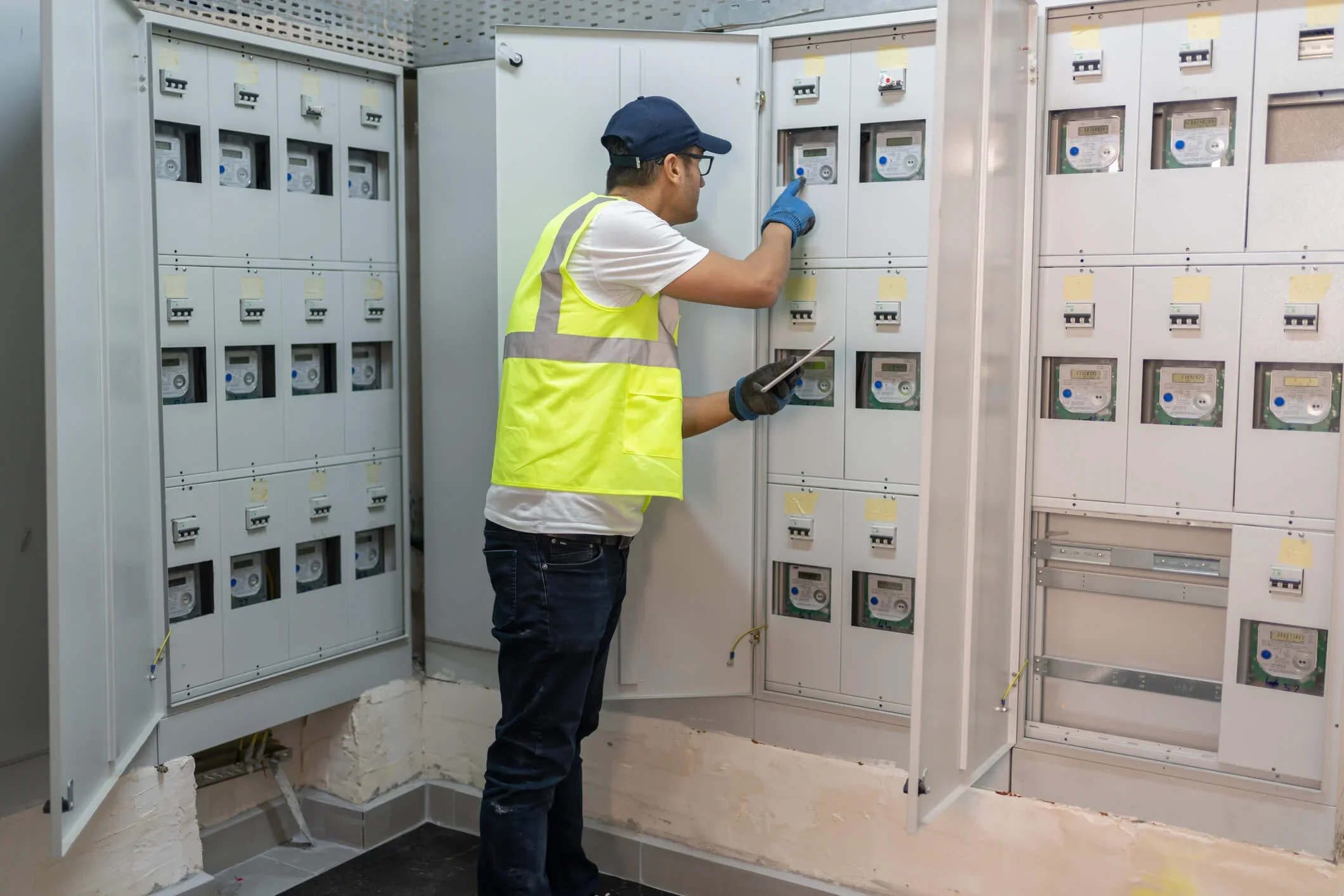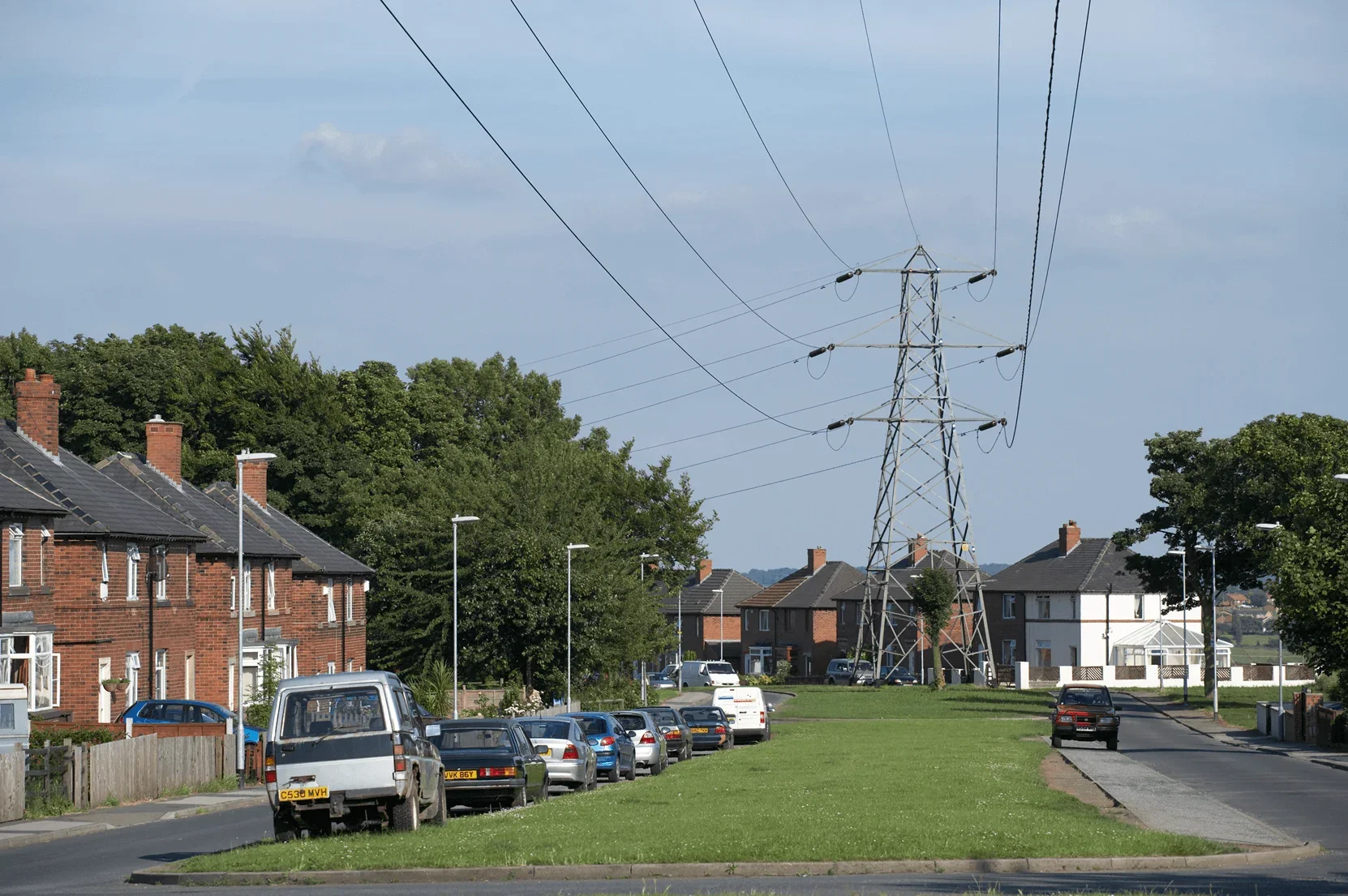BUSINESS ENERGY
A complete guide to half hourly electricity meters
Read time: 5 minutes
By Les Roberts, Business Energy Expert
26th August, 2025
Accurate energy monitoring is crucial for businesses. Incorrect metering can lead to overestimated energy bills, which can quickly add up, particularly for those with high electricity usage. If you run an energy-intensive business, a half-hourly electricity meter could be useful. It might even be a requirement if your energy demand hits a certain level.
This guide explains what half-hourly electricity meters are, how they work, and their benefits, while also exploring options to cut costs.

What is a half-hourly electricity meter?
A half-hourly electricity meter records and transmits data about your business’s electricity consumption every 30 minutes. This real-time monitoring allows energy suppliers to bill your business accurately, ensuring you only pay for the energy you use.
Unlike standard business energy meters that require manual readings, half-hourly meters automate this process. This technology reduces the risk of billing errors and ensures your electricity costs align with your actual usage.
How does a half-hourly electricity meter work?
Half-hourly meters use an internet connection or telephone line to send usage data directly to your electricity supplier. This means there’s no need for manual readings and ensures that data is updated frequently. This gives suppliers a detailed view of energy consumption patterns for accurate billing.
Because of their ability to track electricity usage in real-time, these meters are particularly useful for businesses with fluctuating energy demands. This transparency allows companies to better manage their electricity usage and identify opportunities for cost savings.
Does your business need a half-hourly meter?
Your business might be legally required to have a half-hourly meter installed if it meets a specific level of energy demand. If your business’s peak electricity demand exceeds 100 kVA (kilo volt-amperes) at least three times a year, you must use a half-hourly meter.
To check whether you already have a half-hourly meter installed, examine your electricity bill. If your Meter Point Administration Number (MPAN) begins with "00," it indicates that your supply is monitored via a half-hourly meter.

Businesses with slightly lower electricity usage often opt for half-hourly meters voluntarily to benefit from accurate billing and detailed energy consumption data. This can be particularly useful for businesses looking to optimise energy use and reduce costs.
What is Market-wide Half-Hourly Settlement (MHHS)?
Market-wide Half-Hourly Settlement (MHHS) is an Ofgem-led programme that changes how electricity is billed in the UK. Instead of relying on estimated usage or daily smart meter data, suppliers will use half-hourly meter readings to charge customers for the electricity they actually use.
This will apply to both domestic and non-domestic meters. As well as accurate billing for customers, half-hourly metering will help ensure suppliers are compensated or charged for any shortfalls or excesses in their contracted electricity.
This will run alongside the ongoing smart meter rollout. It should ensure households and businesses are billed fairly, based on real-time energy use.
Why is MHHS being introduced?
MHHS is designed to create a fairer, smarter and greener energy market. Key benefits include:
- More accurate bills – Customers are charged for actual half-hourly electricity use, not estimates.
- Access to new tariffs – Innovative deals like time-of-use tariffs and cheaper overnight EV charging become possible.
- Smarter energy planning – Suppliers can forecast demand more accurately, reducing pressure on the national grid.
- Lower costs for the system – Efficient use of networks reduces the need for expensive infrastructure upgrades.
- Customer rewards – Businesses and households can be incentivised to use less energy at peak times or sell stored electricity back to the grid.
The testing phase has been underway since 2024/ Here are the key MHHS dates to look out for:
- September 202: Supply points across the UK start moving to MHHS over 18 months.
- October 2026: All domestic and business electricity customers are expected to be on use half-hourly settlement.
- May 2027: The new system is fully operational, supported by Ofgem, Elexon and energy suppliers.
Businesses with high electricity demand may already use half-hourly meters, but MHHS ensures all companies are included. Households with smart meters will automatically be migrated to half-hourly settlement.
What are the benefits of half-hourly meters?
As outlined above, half-hourly metering offers numerous benefits. Here is a breakdown of why it could be good for your business:
- Accurate billing - Half-hourly meters minimise the risk of overpaying for electricity by ensuring accurate usage monitoring. With detailed 30-minute intervals, suppliers can provide precise billing based on actual consumption.
- Better energy management - Real-time data from half-hourly meters allows businesses to analyse their electricity usage patterns. This insight can help identify high-demand periods and opportunities to improve energy efficiency.
- Simplified meter readings - Since half-hourly meters are fully automated, there’s no need to manually submit meter readings. This saves time and ensures that suppliers always have up-to-date data.
- Tailored energy contracts - Businesses with half-hourly meters have more flexibility when negotiating energy contracts. You can choose between fixed-rate contracts for budget certainty or variable rates that reflect real-time market changes.
- Compliance with regulations - For businesses that meet the 100 kVA peak demand threshold, using a half-hourly meter is a legal requirement. Compliance helps avoid potential penalties while ensuring your energy use is effectively monitored. It will be a requirement for all domestic and non-domestic meters by 2027.
Are half-hourly meter readings more expensive?
The cost implications of half-hourly meter readings depend on the type of energy contract you choose. Fixed-rate contracts provide predictability in costs, while variable rates may offer lower charges during off-peak hours but higher rates during peak demand.
While the technology itself doesn’t inherently make electricity more expensive, the detailed usage data can sometimes reveal inefficiencies in your energy consumption, leading to adjustments in billing. However, the transparency provided by half-hourly meters often enables businesses to identify and implement cost-saving measures over time.
Can you remove a half-hourly meter?
If your business no longer meets the criteria for a half-hourly meter or moves to premises where one is installed, it’s possible to switch back to a traditional meter. However, this is not a common practice, as the benefits of half-hourly meters—such as accurate billing and enhanced energy management—are usually advantageous for businesses of all sizes.
If you’re considering removing a half-hourly meter, consult your energy supplier to explore your options.
How to switch your half-hourly electricity tariff
Switching to a better energy deal is one of the easiest ways to reduce your electricity bills, even if you use a half-hourly meter. However, navigating the industrial electricity market can be challenging, especially for businesses unfamiliar with contract negotiations.
Here’s how to find cheaper half-hourly electricity prices:
- Compare suppliers - Use a trusted business energy broker to compare tariffs from multiple suppliers. Brokers often have access to exclusive deals and can negotiate on your behalf.
- Analyse your energy consumption - Before switching, review your half-hourly meter readings to understand your energy usage patterns. This will help you select a tariff that best suits your needs.
- Consider fixed vs. variable rates - Decide whether you prefer the stability of fixed rates or the potential savings of variable rates, which fluctuate with market conditions.
- Seek expert advice - Business energy brokers like Bionic can simplify the switching process by comparing quotes, handling paperwork, and negotiating deals tailored to your business.
What are the costs of half-hourly electricity meters?
The costs associated with half-hourly meters include installation, maintenance, and potential charges for data transmission. But you can be sure of accurate billing and compliance with energy regulations at your business.
It’s important to regularly review your energy contracts to ensure that you’re getting the best rates. You might even find suppliers will offer discounts or incentives for businesses with half-hourly meters, especially if you’re willing to commit to long-term contracts.
What to do if you want to remove your half-hourly meter
If your business circumstances have changed and you no longer require a half-hourly meter, speak with your energy supplier. They may offer alternatives, such as reverting to a standard meter or adjusting your energy contract to better align with your current needs.
Find the best half-hourly electricity prices
Ready to explore your options? Compare half-hourly electricity prices today and discover the savings potential for your business. Expert brokers like Bionic can help you find the best rates, handle the administrative process, and ensure a smooth transition to a better energy deal.
Call Bionic’s business energy experts on 0800 140 4667 or request a callback to start saving on your electricity bills.
Is it time to compare business energy quotes and switch?
Take the hassle out of sorting your next energy deal. We compare from a panel of suppliers. You choose the rates that are right for your business.
By clicking ‘COMPARE TODAYS RATES’ you agree for us to search your current energy supplier and usage though industry held data. Enter manually
Our experts share essential knowledge on business energy
All related guides
View all energy guides
- A complete guide to business energy for offices
- A complete guide to business energy for restaurants
- A complete guide to business energy for shops
- How to get a business energy audit to save money and boost efficiency
- A complete guide to business energy bills
- Business energy brokers – everything you need to know
- What are no standing charge business energy tariffs?
- Business energy efficiency: how to save energy at your business
- Change of Tenancy - Moving your business premises
- Commercial property landlord energy advice
- Energy performance certificate for business
- A complete guide to half hourly electricity meters
- How to pay your business energy bills to save money and avoid late fees
- How your business credit score affects your energy deals
- Compare large and industrial business energy prices
- What are renewable energy certificates and REGOs for small businesses?
- Renewable Energy for Business
- A guide to smart meters for business
- Commercial solar panel electricity
- A business guide to time-of-use energy tariffs
- Business energy tariffs explained
- Everything you need to know about the Smart Export Guarantee (SEG)
- Compare small business & micro business energy prices
- Compare business gas and electricity suppliers
- What is the Climate Change Levy?
- Business energy meter installation: Your complete guide
- Multi-site meters and business energy management
- How much is VAT on business energy?
- What happens when your energy supplier goes bust?
- What is a letter of authority (LoA) for business energy?
- What is business microgeneration?
How to switch business energy suppliers with MoneySuperMarket
We can switch your business to a better energy deal in three simple steps
1
We find your details
Just enter your business address and we'll use industry data to accurately find and understand your energy usage.
2
We talk through your quotes
One of our UK-based energy experts will search our supplier panel and give you a call to talk through your quotes.
3
You choose the deal you want
With all the information to hand, you choose the deal that best suits your business and we’ll handle the switch for you.
Compare today’s business energy rates
By clicking ‘COMPARE TODAY'S RATES’ you agree for us to search your current energy supplier and usage though industry held data. Enter manually







